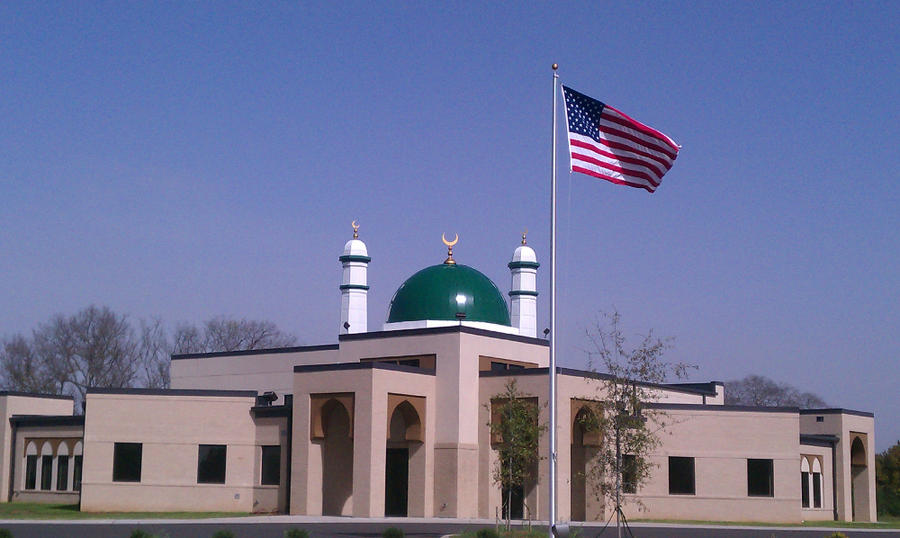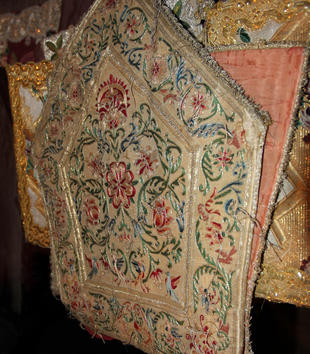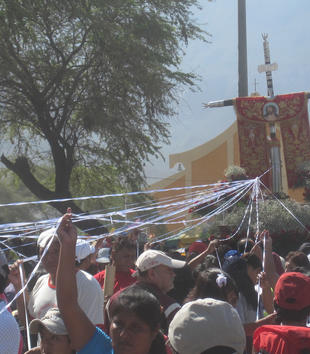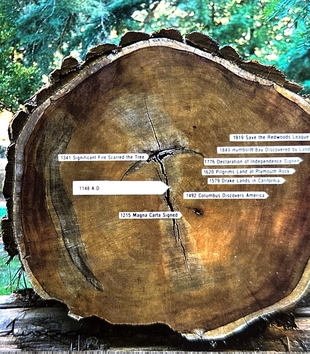Dr. Ossama Bahloul, Imam of the Islamic Center of Murfreesboro, Tennessee, is a busy man. For the better part of three years, he and his growing congregation have struggled to construct a new, larger building that may more effectively accommodate the nearly twenty-five thousand Muslims that call Murfreesboro and its surrounding area home. On September 19, 2012, Dr. Bahloul agreed to meet me at his office, which was at that time still located at the site of the old Islamic Center. Consisting of a mosque and an attendant day-care center and school, the center was to put it mildly, inconspicuous. It occupied two units in a desolate strip mall, nestled behind a second, equally desolate strip mall, invisible to the busy vehicle traffic and passersby on the nearest road. There were no signs on any of the units that indicated its location. The old Islamic Center of Murfreesboro was not, it seems, meant to be seen at all. Camouflaged amidst a row of empty, non-descript commercial lots that would be perfectly at home in an Edward Hopper painting, its presence was strategically integrated into its mundane surroundings. A yearning to blend in, be ordinary, unremarkable, even overlooked, would, as I later discovered, inflect the architectural presentiments of the old and new centers alike, and provide an apt metaphor for the struggles that have confronted the Islamic community in this small city in central Tennessee.
Soon, Dr. Bahloul emerged from a car in the parking lot and invited me inside an unmarked door. We proceeded across a small 1,200 square-foot prayer hall no larger than a suburban yoga studio and into his office. "Things are cramped here," he told me, "We can’t accommodate everyone any longer for Friday prayers." To remedy the situation, the Islamic Center’s board of directors acquired a nearby property and began plans to construct a new center. "I arrived in Murfreesboro in 2008, and at first everything was great," Dr. Bahloul recalled, "Relations between the Islamic community and those of other faiths were excellent. There were never any problems."1
But that changed when a controversy over the proposed construction of an Islamic Center in an abandoned Burlington Coat Factory in lower Manhattan made national headlines. In 2009, Imam Feisal Abdul Rauf and his wife Daisy Khan formulated a plan to build what would become known as the Park51 Community Center, two blocks north of the site where the twin towers of the World Trade Center fell on September 11, 2001. Their intent was to make a bold statement that Islam was constructive, not destructive. Muslims would mount a proactive response to the destructive agendas of hatred and terror. The building, according to Daisy Khan, gives "voice to the silent majority of Muslims who suffer at the hands of extremists."2 Park51’s mission, according to its website, is to "weave the Muslim-American identity into the multicultural fabric of the United States," and "to foster cooperation and understanding between people of all faiths and backgrounds through relevant programs and initiatives."3
Rauf and Khan's commitment to multiculturalism and interfaith understanding refuted radical agendas. Yet it did little to insulate Park51 from the criticism of blogger and anti-Islam activist Pamela Geller. She argued that the project would be "a giant symbol of Islamic supremacism on the cherished site of land they think they conquered."4Comments such as Geller's, amplified by conservative news outlets, fed into a frenzy of controversy and suspicion. The desire of an overwhelming majority of ordinary Muslims to push back against vile terrorists who claimed to speak for their religion was met with staunch opposition; not from those extremists whose hateful and violent ideology they sought to counter, but from another group of extremists from outside their faith. Members of this group, exemplified by Geller, were, and continue to be, doggedly and ironically committed to preserving individuals like Osama bin Laden as the true representatives and spokespeople of Islam. Fallout from the so-called "Ground-Zero Mosque" controversy rippled across the United States. Vandalism struck local mosques and Islamic community centers in multiple states many hundreds of miles from ground zero, where congregations had lived and worshipped peacefully alongside their non-Muslim neighbors for decades.
This hysteria soon afflicted the Islamic Center of Murfreesboro, Tennessee. In January 2009 and again in June of the same year vandals defaced and destroyed a sign that announced "the future site of the Islamic Center of Murfreesboro." Later that August, arsonists set fire to construction equipment at the site. Protesters appeared. "Children felt threatened," Dr. Bahloul recounted. A lawsuit was filed in July 2010 that sought to nullify the construction permit for the Islamic Center that had already been approved by the county planning commission. In a circus-like atmosphere, the plaintiffs in the case Estes vs. Rutherford County Regional Planning Commission argued for six days that Islam was not a religion but a radical political organization that advocates, among a litany other things, the "sexual abuse of children" and "total world domination," and that the construction of the Islamic Center of Murfreesboro should be halted because Islam posed a threat to public safety.5The lawsuit failed, but protests continued. In September of 2011, a Texas man was arrested and ultimately convicted for phoning in a bomb threat. Things were grim.6
But nothing could prepare Murfreesboro’s Muslims for the 2012 Republican Primary Election for Tennessee’s Sixth Congressional District of the U.S. House of Representatives. The incumbent, Representative Diane Black, cultivated a reputation as one of the most conservative Republicans in the House. Her opponent, county commissioner and businesswoman Lou Ann Zelenik, decided that the best way to unseat Representative Black was to outflank her and move even farther to the right. Zelenik accused Black of being too accommodating to Islam, which she often described in vitriolic terms similar to those used by the plaintiffs in Estes vs. Rutherford County Regional Planning Commission. In 2010 Zelenik formed the Tennessee Freedom Coalition, which devotes much of its time and resources to, among other initiatives, the production of inflammatory anti-Muslim propaganda. Black responded by citing her support for anti-Shariah legislation. The perceived threat of Islam became the defining issue of the campaign, and the Islamic Center of Murfreesboro became a political football, kicked mercilessly back and forth between the two candidates. Both sought to prove that they were the leader most likely to protect the communities of Tennessee’s Sixth Congressional District from the radical jihad that they seemed certain was soon to break out across the rural mid-south countryside.7
Despite all this, Dr. Bahloul and his congregation were overwhelmed with support from thousands of courageous friends and neighbors from throughout the region who condemned the bigotry before and during the lawsuit and during the divisive 2012 election. "There are more good people than bad," he reassured me. His optimism, though genuine, appeared strained by years of fatigue and dulled by seemingly non-stop clashes with protestors and politicians.
The new Islamic center itself remains lodged in the eye of the hurricane it ostensibly created. Surrounded by fierce debates and political grandstanding, discussions of the building itself—its architecture, visual and material properties—seem beside the point. Competing interpretations of its symbolic currency continue to overwhelm any consideration of the particularities of its appearance. After our discussion in his office, Dr. Bahloul drove me to the new facility and gave me a tour. The new Islamic Center of Murfreesboro is located in a highly visible location, next door to Grace Baptist Church. Although prominent, the center is not particularly distinctive. It retains an air of inconspicuousness that carries over from the old strip mall. The new center is situated on a busy commuter thoroughfare, but it stands a few hundred meters back from the road, a location that lends it an air of reticence and humility. The most attention-grabbing quality of the building, a police car that idles ominously in an otherwise empty parking lot, has nothing to do with the structure itself. "Security is a problem," Dr. Bahloul confided. "The city can only provide so much, and private guards are expensive." In front of the entrance, a tall flag pole sports a gigantic American flag that flies high above the roofline.
I was prepared to give the new building the usual art historical go-over: Who designed it? From what sources does the architecture draw? How does it operate visually and formally? What characteristics make it distinctive or endow it with a particular style? But Dr. Bahloul wasn’t interested in addressing or discussing any of those things. While enthusiastic, kind, and generous with his time, the Imam seemed intent on proving to me—a non-Muslim, and almost certainly one of scores to whom he has given the same tour—that the primary attribute of the structure was that nothing funny or strange takes place there. He led me through a series of vestibules, hallways, offices, a kitchen, an area for children to play, a bathroom, a utility closet, and the multi-purpose prayer hall. His descriptions were as prosaic as the spaces they described. He reassured me, with a joke that he had no doubt told countless times before, that there were no weapons in the utility closet—only janitorial supplies. The kitchen is used to cook food. An office features a desk and some chairs. Dr. Bahloul meticulously enumerated such things. Finally, he took me outside to the dumpster and ended the tour. "The trash goes here," he said.8
Even without Dr. Bahloul’s magnificent deadpan, I got the point. The building’s generic and altogether unremarkable qualities were self-evident. Although attractive, well-built, and pleasant, the Islamic Center of Murfreesboro is profoundly ordinary. It is similar to hundreds of other mosques and Islamic centers in small cities and towns across the United States. Except for the small, decorative minarets recently added to the roof, the dryvet-like stucco exterior capped by the modest green dome would not seem out of place at an Olive Garden. It is subtly tacky; and as a result completely, unmistakably, and unabashedly American. Perhaps what ordinary American Muslims require from their architecture is precisely this. What may ultimately undermine extremist manipulations of public perceptions of Islam is the emphatic presence of forgettable things, like beige stucco. Nothing, after all, blends into the architectural landscape of twenty-first century America more seamlessly than that.
In Murfreesboro and other places that have suffered through similar afflictions of anti-Islamic bigotry in recent years, obdurate banality may be the perfect visual bulwark against manufactured outrage.
With thanks to Dr. Ossama Bahloul and the brave congregation of the Islamic Center of Murfreesboro.
Hang in there.



